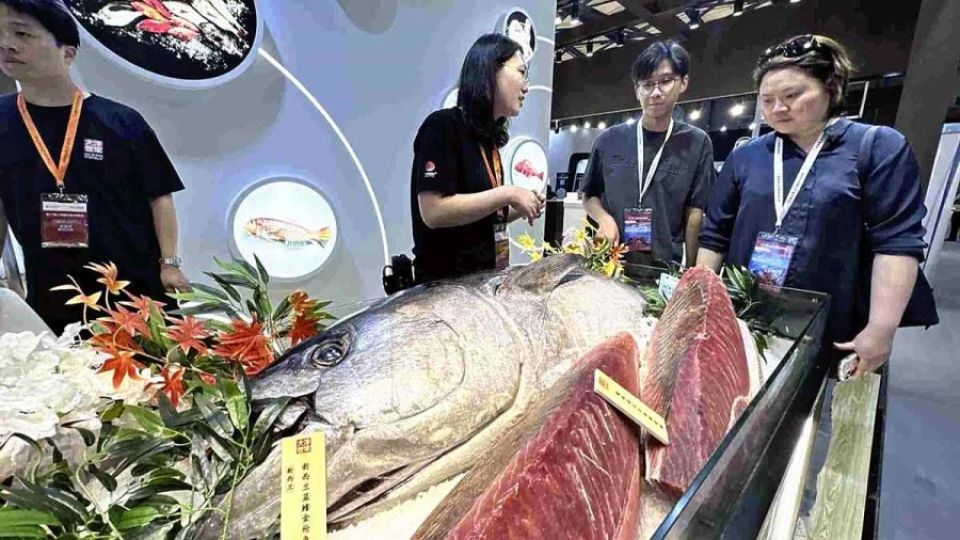August 25, 2023
SHANGHAI – The Chinese government dealt a harsh new blow to Japanese fisheries business operators and retailers handling Japanese products in China when it announced on Thursday a complete ban on the import of seafood and other marine products from Japan.
The businesses had already been suffering due to China’s extreme tightening of customs inspections of Japanese marine products.
The new ban, like the restrictions that preceded it, are expressions of China’s opposition to Japan’s release of treated water from Tokyo Electric Power Company Holdings. Inc’s Fukushima No. 1 nuclear power plant. Japan began releasing the water on Thursday.
On Wednesday, the Shanghai International Fisheries and Seafood Exhibition kicked off. There was a sign in Japanese at a tuna-cutting show there, but visitors were actually served slices of tuna caught in New Zealand.
“We planned to display Japanese tuna, which is popular, but it cannot be helped because we cannot import Japanese fish,” said an official of the Chinese company that organized the show.
More than 4,000 businesses from China, the United States, Europe and other countries are participating in the event as exhibitors. But there appeared to be fewer than 10 Japanese companies taking part.
A dealer in Mie Prefecture, which had exhibited at the event every year, decided not to participate this time in light of Chinese opposition. Reaction to the discharge of treated water cast a shadow over the event.
According to a fisheries dealer from the Kyushu region who was visiting the event, their company shipped fresh Pacific bluefin tuna by air to Shenzhen in early July, but the product was held at customs for 10 days in the name of checking for radioactive substances.
The dealer eventually had no choice but to discard the tuna, which had lost its freshness. Together with products from five other companies that were shipped together, the loss totaled ¥100 million.
TEPCO said it intends to provide compensation for damage due to harmful misinformation linked to the release of treated water.
The Kyushu dealer consulted the Agriculture, Forestry and Fisheries Ministry about whether their loss would be compensated, but they have yet to receive any answer.
“We’re simply worried,” the dealer said disappointedly.
According to statistics by Chinese customs authorities, imports of fresh seafood from Japan in July totaled 22.63 million yuan (about ¥450 million), down 53% from the previous month.
Also, imports of frozen fish, which can be stored for a certain period, fell 13% from the preceding month, to 36.77 million yuan.
China’s customs inspections of Japanese seafood had been expected to take about two weeks, amounting to a de facto embargo on fresh seafood even before the ban was announced.
The inability to procure Japanese seafood is impacting Japanese restaurants and retailers handling Japanese food.
At the fresh fish section of a Japanese supermarket in Shanghai recently, many of the fish on display were from China, Canada and New Zealand. Among dozens of products, the only ones imported from Japan were buri amberjack from Kagoshima Prefecture and salted salmon roe from Hokkaido. Both were frozen.
China’s Foreign Ministry spokesperson had indicated that China would step up its countermeasures once the discharge of treated water started. “The Chinese government will take necessary measures to firmly protect the marine environment, food safety and people’s health,” the spokesperson said in a press conference on Wednesday.

